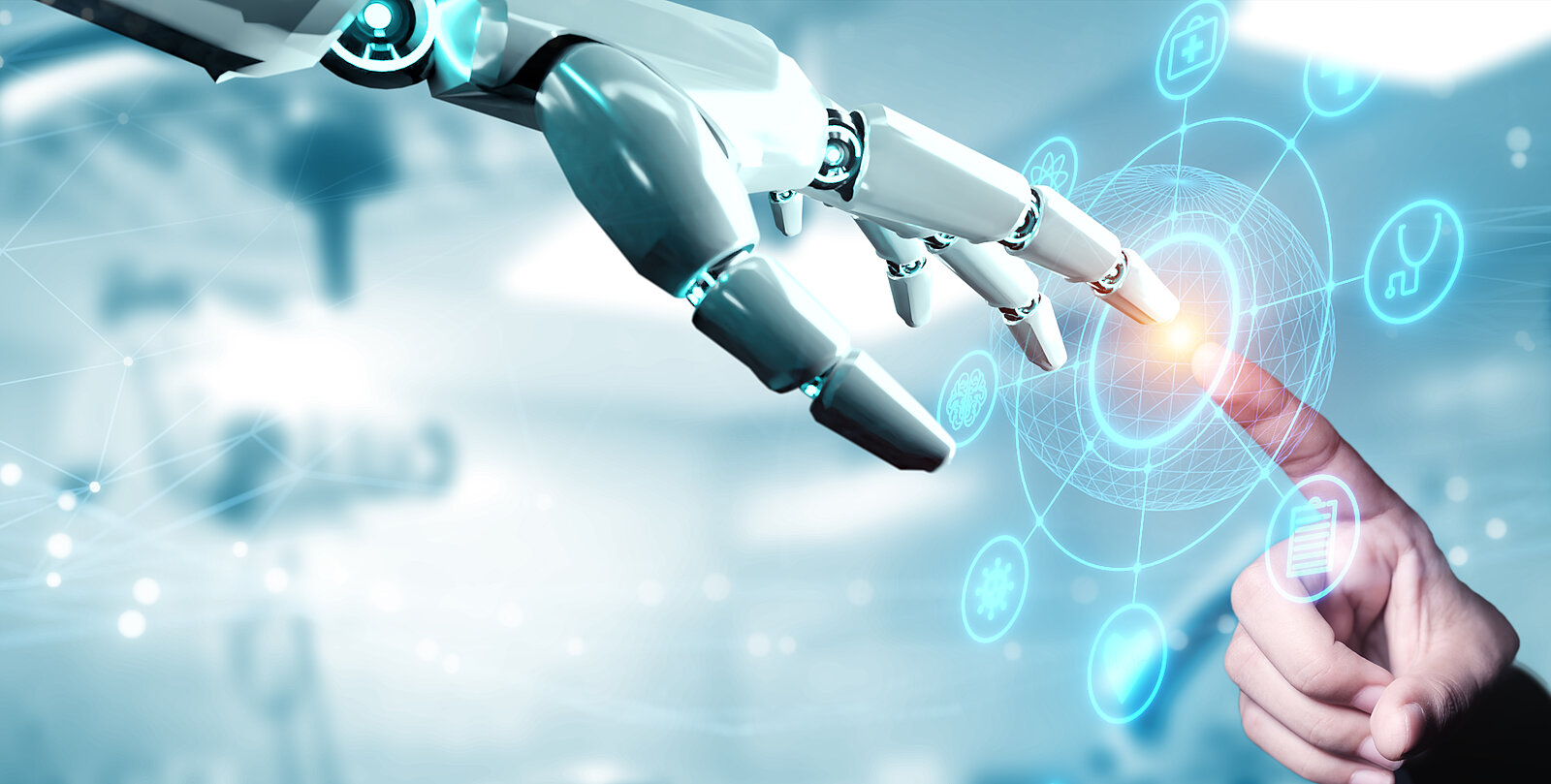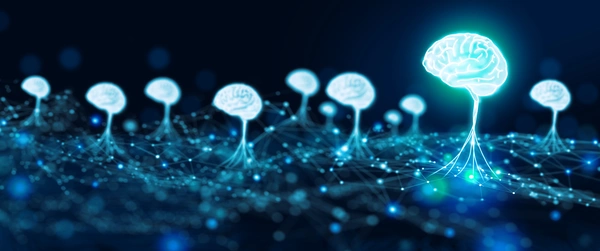More and more companies are turning to artificial intelligence (AI) to optimize their business and production processes and open up new business opportunities. What many do not consider is that the operation of AI applications places special demands on the IT infrastructure. In particular, the hardware required to operate AI often requires a fundamentally different setup in the data centers than is the case for conventional applications.
Higher computing power for AI applications
AI applications generally require more powerful servers than conventional IT applications. This is because AI often requires extensive data analysis and complex calculations, which leads to significantly higher power consumption and increased heat generation. Traditional data centers quickly reach their limits here. High-performance computing (HPC) is designed for greater computing power. It uses powerful computer clusters to quickly solve computationally intensive tasks, such as simulations for science and research, data analysis and processing for machine learning and artificial intelligence applications.
Specialized data centers and cooling technologies for HPC and AI
To meet the high performance requirements of modern AI and HPC servers, specialized data centers with robust infrastructure are needed. These centers are often equipped with a powerful power supply and high-performance racks that can efficiently house and cool the dense hardware. As traditional cold and hot aisle containment is often insufficient to dissipate the significant waste heat, alternative cooling systems are used, including Direct Liquid Cooling (DLC), immersion cooling and modular and dynamically controlled air cooling systems. These technologies enable targeted heat dissipation, which is essential for the operation of high-performance AI servers.
However, cooling remains a particular challenge, especially for HPC systems, whose heat dissipation is far higher than that of conventional systems. Traditional methods often reach their limits here. Closed loop cooling systems, which use internal water cooling for effective heat dissipation, are an innovative solution. Here, a heat exchanger transports the waste heat to the outside, supported by powerful fans. Such compact systems are particularly suitable for data centers that do not have a direct water supply and offer flexible but powerful cooling for HPC and AI applications.
Training vs. inferencing: Tailored hardware for AI performance and efficiency
Not all AI applications are the same - the actual hardware requirements depend heavily on the specific application. There is a significant difference between the training of AI models and inferencing, i.e. the use of trained models in everyday operations. Training usually requires considerably more computing power, which is why special servers with powerful GPUs are often required for this. GPUs are optimized for parallel processing with many small cores and are particularly suitable for computationally intensive tasks such as AI training and scientific calculations. However, these graphics cards have a high power consumption and generate a lot of heat, so high-performance racks that can support 45 kW or more are often required for training larger models.
In contrast, inferencing can often be carried out efficiently with modern CPUs. These have few but powerful cores and can handle a large number of inferencing processes without always requiring expensive graphics cards. CPUs are often the more economical choice, especially for industrial applications where servers are operated on site with conventional power supply and cooling. This allows companies to select the right hardware to optimally support their AI applications depending on their requirements.
Cloud solutions as an alternative?
For companies considering implementing AI applications in their own data centers, it is crucial to work closely with hardware and software providers as well as IT infrastructure specialists to determine the specific requirements. This often raises the question of whether the cloud can be a viable alternative to avoid the high investment in in-house infrastructure.
Cloud providers also require a similar infrastructure and have made significant investments in their AI systems. This means that cloud solutions are not necessarily more cost-effective, despite possible economies of scale. For companies that only use cloud services sporadically, this may be the better solution. For continuous operation, however, on-premises solutions are often more efficient, more cost-effective and also more secure, as they mean complete data sovereignty.
Energy consumption and sustainability in artificial intelligence
Applications in modern data centers already consume around 40% of the total energy required by data centers, while a further 40% is used to cool the servers. These figures make it clear that the operation of AI applications is not only a technical challenge, but also has a significant impact on energy consumption and the environment. The sustainable use of AI-based applications also involves the responsible use of energy and resources in order to minimize the ecological impact.
Germany is an attractive location for data centers
Germany is a sought-after location for data centers. Germany is located in the center of Europe and therefore offers excellent connections to other European countries. A stable energy supply and well-developed infrastructure as well as high requirements for security standards and data security provide a stable basis for potential investments in data centers. With increasing digitalization and the growing demand for cloud computing services, the need for reliable data centers in Germany is growing, which should above all be designed to be energy-efficient and sustainable. Many data centers operate “green IT” and use renewable energy to reduce their ecological footprint.
Further efficiency improvements required
Looking to the future, data centers must become more efficient. Regulations aim to reduce energy requirements for applications and cooling. Companies are under pressure to find innovative solutions to improve energy efficiency, be it through optimized cooling methods or the use of more efficient hardware.
Future prospects & conclusion
The demand for AI will continue to grow, driven by advances in technology and the increase in AI-based applications. This development requires not only a change in the hardware and infrastructure of data centers, but also conscious planning in terms of energy consumption and sustainability.
The operation of AI applications presents companies with a variety of challenges that have an impact on IT infrastructure, energy consumption and cooling. A deep understanding of the specific requirements is crucial for the successful use of AI in companies. At the same time, it is essential to focus on energy efficiency and sustainable practices in order to take environmental responsibility and cope with the increasing demand for AI technologies.
Title picture: © Have a nice day / #485241075 / stock.adobe.com (Standard licence)


